Spanish lesson plans for high school students typically focus on developing language and cultural awareness. They involve activities designed to enhance learning, speaking, reading, and writing skills in Spanish.
A typical lesson plan begins with a warm-up activity (we call these activators) to motivate the students. This is typically followed by a presentation or discussion of a new topic. Students then engage in an activity related to the topic with the aid of materials prepared by the teacher.
When using our suggested lesson plans below, you can dedicate more time to actively monitor student progress and provide feedback accordingly. Finally, the lesson ends with an exit ticket and assessment of what has been covered.
Basic Structure of Spanish Lesson Plans for High School
1. Clear objectives & expectations: The goal of any lesson plan is to teach your students something. Before each lesson, set some clear objectives and expectations for them to work towards. Additionally, be sure to explain why these objectives are important so that students understand the bigger picture.
Our lesson plans below are aligned with ACFL Standards and have Can-Do statements written for you.
2. Engaging activities: For high school students, it’s important to have engaging activities in your lesson plans to hold their attention and keep them involved. Try to use interactive activities like role plays, vocabulary games, video clips, or projects that they can complete in small groups.
3. Variety: Language learning can become tedious if you stick to the same type of activity every day. Incorporating several types of activities into your lesson plans, such as conversations in Spanish, listening exercises, reading comprehension worksheets etc., will help keep your students engaged and motivated to learn Spanish.
4. Assessments: Understanding whether your lessons achieved the desired goals is essential for long-term progress in any learning program. During class sessions with high school students, use exit tickets or tests intermittently to assess their understanding of the material and gauge their progress in the language.
38 Spanish 1 Lesson Plans for High School Students
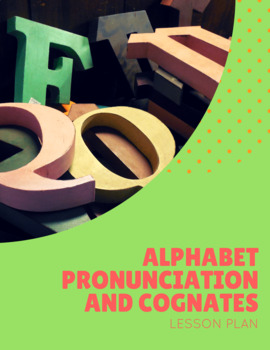 Alphabet Pronunciation and Cognates Lesson Plan
Alphabet Pronunciation and Cognates Lesson Plan
Through viewing an authentic musical video, students will review the pronunciation of the alphabet in Spanish. They will then use this knowledge to identify and present the cognates. Includes the alphabet pronunciation chart in Spanish.
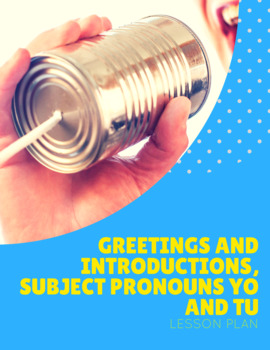 Greetings and Introductions – Subject Pronouns YO and TU Lesson Plan
Greetings and Introductions – Subject Pronouns YO and TU Lesson Plan
Students learn how to exchange personal information (name, origin, age), some basic greetings, and the subject pronouns yo and tú. They will practice in written practice, a card game, and by creating an original dialogue using expressions to greet and introduce themselves in Spanish.
 Subject Pronouns, Personal Pronouns Game and Lesson Plan
Subject Pronouns, Personal Pronouns Game and Lesson Plan
Through an illustrated presentation, the students will learn the subject pronouns. Then, they will play two games to review and remember them. Finally, they will practice them orally by creating a series of sentences. Includes a printable and Flippity memory game.
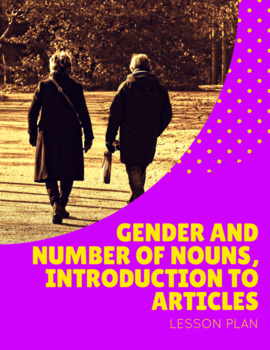 Gender and Number of Nouns – Introduction to Articles Lesson Plan
Gender and Number of Nouns – Introduction to Articles Lesson Plan
Through viewing a video on the concept, teacher instruction, and a game, students will learn how to identify and change the gender and number of nouns in Spanish
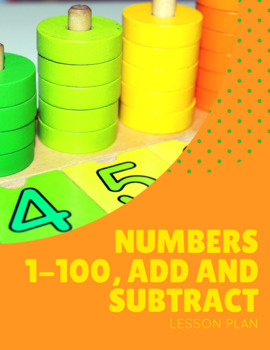 Numbers 1-100, Add and Subtract Lesson Plan
Numbers 1-100, Add and Subtract Lesson Plan
Using a video and a presentation, students will learn the numbers from 1 – 100, the number rules, and how to add and subtract in Spanish. They will do oral and written practice. Finally, they collect numerical information from a classmate to create an infographic to present in class.
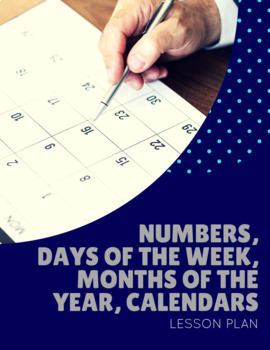 Numbers, Days of the Week, Months of the Year, Calendars Lesson Plan
Numbers, Days of the Week, Months of the Year, Calendars Lesson Plan
By reviewing educational videos, the students will be able to form numbers and identify the days and months. Also, they will create a personal timeline that uses the information they will learn.
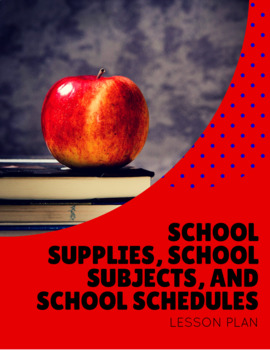 School Supplies, School Subjects, and School Schedules Vocabulary Lesson Plan
School Supplies, School Subjects, and School Schedules Vocabulary Lesson Plan
Through viewing videos on the Internet, the students will review school supplies, subjects, and schedules. Then, they will use this information to create and present a puppet show.
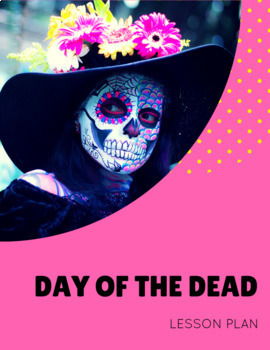 Day of the Dead – El Día de los Muertos
Day of the Dead – El Día de los Muertos
Students learn about the origin of the Day of the Dead and discuss the concept of ‘cultural syncretism’. They will discover the deeper meaning of the festival through a video and learn some of the elements that are part of the festival. Finally, they watch a video about the influence of Halloween in the traditional Day of the Dead in Cancun.
 Gender of Nouns, Definite and Indefinite Articles – Classroom Objects, School Supplies
Gender of Nouns, Definite and Indefinite Articles – Classroom Objects, School Supplies
Through reviewing two educational videos, students learn that nouns in Spanish have a gender, number, and that the article should match both. With and authentic music video, students acquire and review classroom activity vocabulary to complete a final
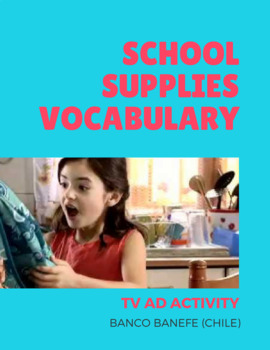 TV Ad Banefe – Compras Escolares – School Supplies Vocabulary
TV Ad Banefe – Compras Escolares – School Supplies Vocabulary
Practice the school supplies vocabulary with this activity that uses an authentic TV ad from Latin America. The activity uses the Integrated Performance Assessment (IPA) format.
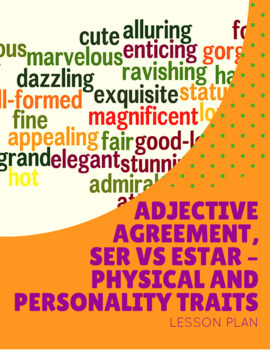 Adjective Agreement, SER vs ESTAR – Physical and Personality Traits
Adjective Agreement, SER vs ESTAR – Physical and Personality Traits
Students review the uses of ser & estar and their conjugations in the present tense. They learn common vocabulary words that describe physical and personality traits and review adjective agreement rules. They apply all these learnings through a guided class exercise and a fashion critique oral presentation.
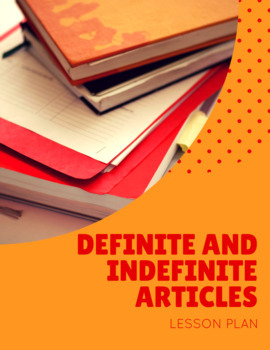 Definite and Indefinite Articles
Definite and Indefinite Articles
Upon completing this activity, students will have identified and used articles appropriately. Practice the material covered in previous classes: greetings and introductions, infinitive verbs, school supplies vocabulary, use of ser and estar.
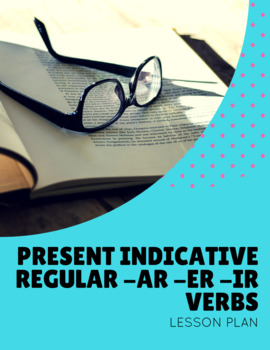 Present Indicative Regular -AR -ER -IR Verbs (Infinitive Verbs)
Present Indicative Regular -AR -ER -IR Verbs (Infinitive Verbs)
Students learn verbs’ classification into three categories and watch a video where conjugation of regular verbs in the present indicative is explained. They prepare a cheat sheet and practice conjugation in a team contest.
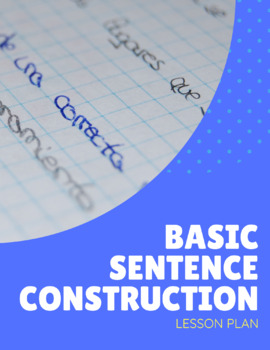 Word Order – Basic Sentence Structure
Word Order – Basic Sentence Structure
By the end of this activity, students will have learned how to construct a basic sentence in Spanish, using four different permitted word orders, while practicing spoken tongue twisters in Spanish.
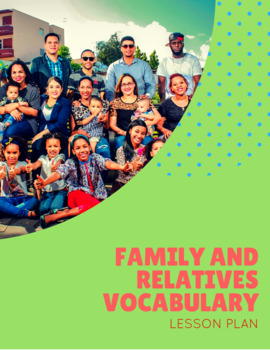 Family and Relatives Vocabulary – Physical Traits, Relationships, Age and Names
Family and Relatives Vocabulary – Physical Traits, Relationships, Age and Names
By the end of this activity, students will have learned family vocabulary, how to describe people, and to ask and answer names and ages. Students will have practiced the vocabulary orally and written in context. They will be able to understand and produce the concepts.
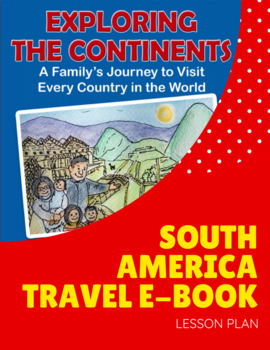 Exploring the Continents: South America E-Book
Exploring the Continents: South America E-Book
At the end of the activity, students will have learned about the 9 Spanish-speaking countries in South America. They will also review the family and travel vocabulary in Spanish.
 Christmas in Latin America and Spain – Navidad
Christmas in Latin America and Spain – Navidad
Students learn Christmas vocabulary and traditions from Spain and Latin America. It begins with an image-text inference activity to learn Christmas vocabulary. Then students learn Christmas traditions from Spain with a presentation and authentic videos.
Students will be able to recognize verbs ser and tener and whether they are conjugated correctly when listening to sentences. They will also correctly conjugate them when describing pictures with complete sentences.
By the end of this activity, students will have learned how to use basic expressions with tener. By spending an entire class period on these idiomatic expressions, students will remember that they are unusual and require special effort to memorize. In-class role-plays incorporating miming between pairs will make the exercise more memorable
Through an educational video, the students learn the vocabulary and phrases to tell the time in Spanish and the situations where to use them. Then, the students practice by playing the classic game Tic-Tac-Toe. Also, they read an infographic about the daily routines of powerful personalities and will analyze the differences among them. Finally, they create the perfect daily routine of the life of a powerful personality.
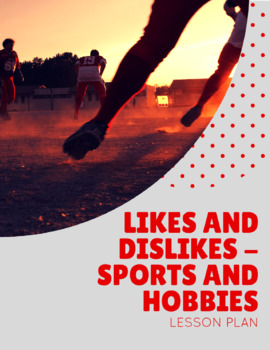 Likes and Dislikes – Sports and Hobbies
Likes and Dislikes – Sports and Hobbies
Students will have reviewed and used orally and in writing, the vocabulary about sports and hobbies, likes, and dislikes according to the different degrees.
 Expressing Wants and Desires Lesson Plan
Expressing Wants and Desires Lesson Plan
Through videos and visual materials, students will review their knowledge about hobbies and pastimes. After that, they will use the content learned to complete oral and written exercises interacting with the rest of the class.
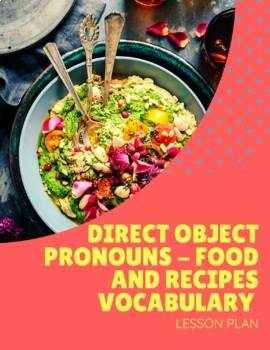 Direct Object Pronouns – Food and Recipes Vocabulary
Direct Object Pronouns – Food and Recipes Vocabulary
Students will learn the DO pronoun forms through a video. Then, they create a cheat sheet that they will present to the class. Finally, they carry out three oral activities to practice the DO forms.
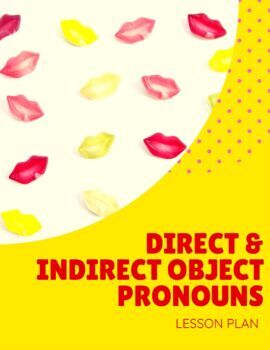 Direct and Indirect Object PronounsThis lesson is based on the song Darte un beso by Prince Royce where the students complete a cloze and a chart. They will use a silent short movie and a suggested vocabulary to create a dialogue using the direct and indirect object pronouns.
Direct and Indirect Object PronounsThis lesson is based on the song Darte un beso by Prince Royce where the students complete a cloze and a chart. They will use a silent short movie and a suggested vocabulary to create a dialogue using the direct and indirect object pronouns.
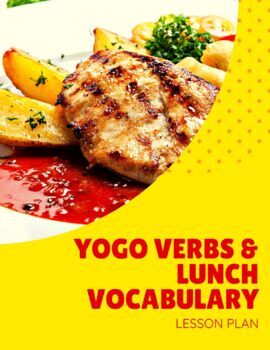 GOYO Verbs and Lunch Vocabulary
GOYO Verbs and Lunch Vocabulary
Students will be able to describe the process of making their lunch/ what they bring in their lunches to school using the food vocabulary. By using oral and written activities, they will be able to demonstrate the use of GOYO irregular verbs and food vocabulary.
 Preposition A – Leisure and Vacation Time
Preposition A – Leisure and Vacation Time
By the end of this activity, students will have learned the vacation vocabulary and to use the preposition A for places. They will also review the clothing vocabulary.
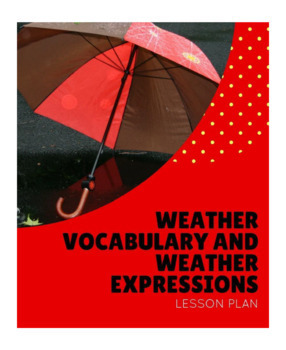 Weather Vocabulary and Weather Expressions
Weather Vocabulary and Weather Expressions
By the end of this lesson, students will have learned the vocabulary and basic expressions related to the weather in Spanish. They will also review the days of the week, clothing, and leisure activities vocabulary learned in previous lessons.
 Uses of Infinitives Lesson Plan
Uses of Infinitives Lesson Plan
Students will be able to create a video or scene that exemplifies how to use infinitives in Spanish and correctly use infinitives when writing simple sentences in Spanish.
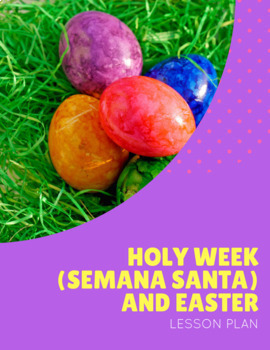 Easter and Holy Week (Semana Santa)
Easter and Holy Week (Semana Santa)
Students read a text in Spanish about Holy Week traditions. They identify cognates, answer reading comprehension questions, and prepare a presentation about specific traditions mentioned in the reading. Includes the audio file for the reading.
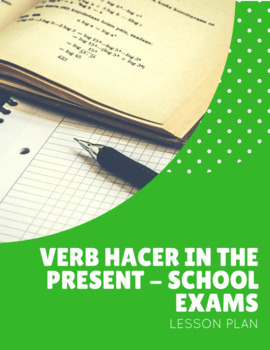 Verb HACER in The Present – School Exams
Verb HACER in The Present – School Exams
At the end of this activity, students will have reviewed the verb ‘hacer’ present tense conjugation and will have used it to talk about school exams. Through the analysis of memes, students will review the verb hacer in the present tense. They will then use this knowledge and a short film to talk about school exams.
 Body Parts and Health Vocabulary – DOLER and Indirect Object Pronouns
Body Parts and Health Vocabulary – DOLER and Indirect Object Pronouns
Students review and use body parts and specific health vocabulary. They also review and use indirect objects to talk about feeling sick, more specifically IO + doler + part of the body.
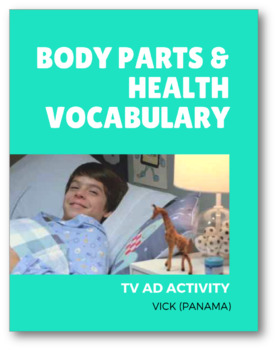 TV Ad Vicks – Tu Medicina Para El Resfriado – Body Parts and Health Vocabulary
TV Ad Vicks – Tu Medicina Para El Resfriado – Body Parts and Health Vocabulary
Students learn about the body parts and symptoms with an authentic tv commercial from Latin America. Students also learn about the product Vicks in Latin culture. Includes and Integrated Performance Assessment (IPA).
Students will review their knowledge of the Spanish numbers using two authentic videos. Then they will use the numerical information provided in infographics to talk about numbers and data concerning Social Media Platforms.
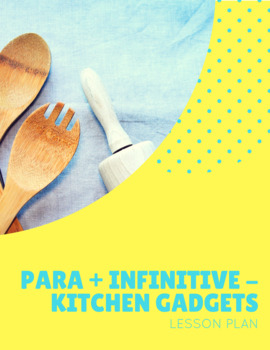 Para + Infinitive – Kitchen Gadgets
Para + Infinitive – Kitchen Gadgets
This lesson uses an authentic video about kitchen gadgets and their uses to practice the form Para + Infinitive. Then students will apply their knowledge to create their own presentation introducing new home inventions.
Through a guided lesson and video, the students will review the rules of using personal ‘a’ and will teach the concept to classmates by creating a brief educational video.
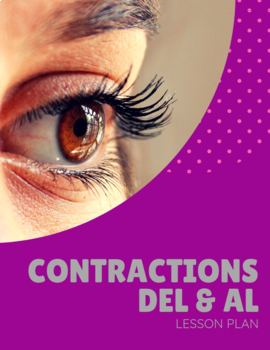 Using Contractions AL and DEL in Spanish
Using Contractions AL and DEL in Spanish
By the end of this activity, students will have learned the Spanish contractions “al” and “del” as well as two idiomatic expressions in Spanish that demonstrate how to use the contractions.
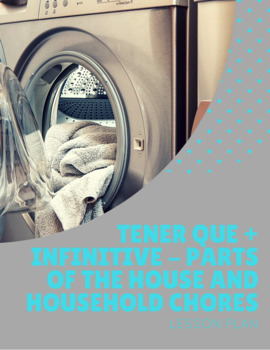 Tener que + Infinitive – Parts of the House and Household Chores Vocabulary
Tener que + Infinitive – Parts of the House and Household Chores Vocabulary
Students use the musical video Hoy es domingo by Rubén Blades and Diego Torres to review the rooms of the house and household chores vocabulary with the form tener que + infinitive. They also work in pairs in an A/B oral activity using a chores schedule.
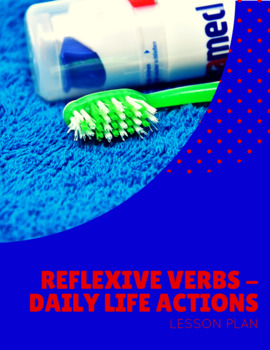 Reflexive Verbs – Daily Life Actions Lesson Plan
Reflexive Verbs – Daily Life Actions Lesson Plan
Students are exposed to some examples to understand the difference between a verb and a reflexive verb, then they watch an educational video about reflexive verbs with the song Y no hago más na’. Then they watch an authentic video in Spanish that documents the daily routine of a video blogger, and they use reflexive verbs to describe what he does every day.
Click here for more Spanish Lesson Plans.

 Verbs TENER and SER
Verbs TENER and SER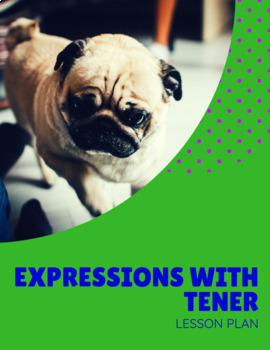 Expressions With TENER
Expressions With TENER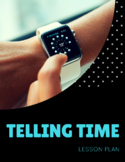 Telling Time
Telling Time Numbers 100-1000
Numbers 100-1000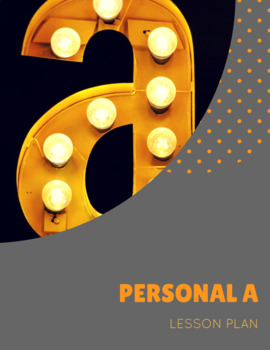 Personal A
Personal A